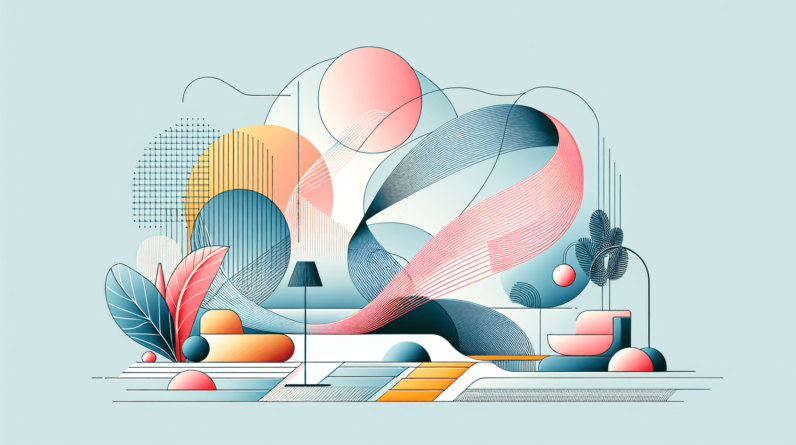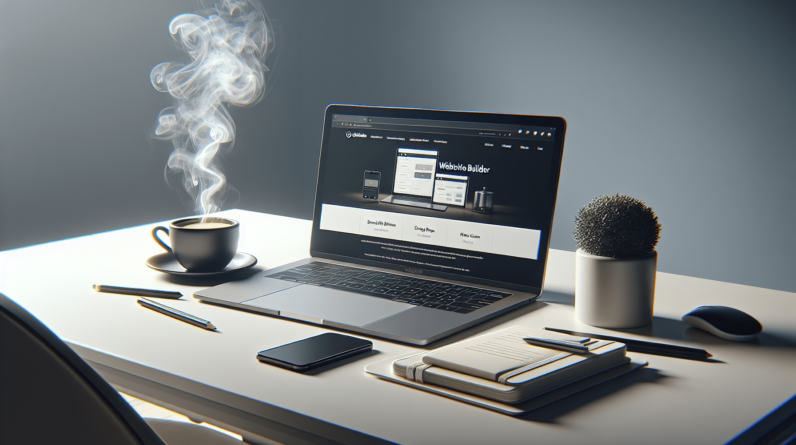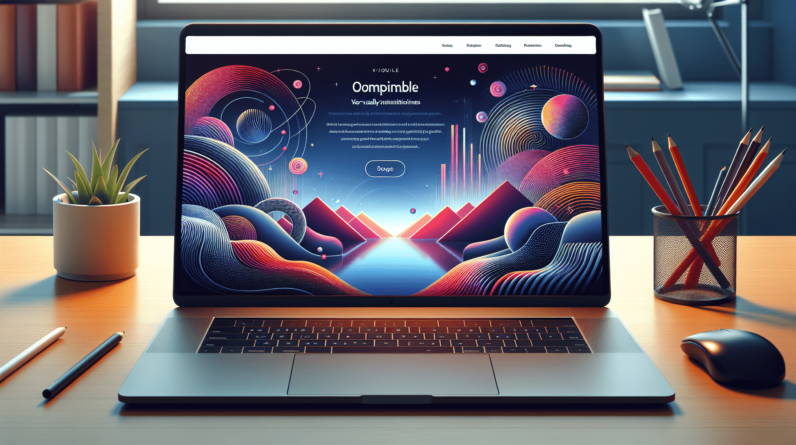
Imagine having a website that not only looks visually stunning, but also functions seamlessly to drive your online business forward. Get ready to be inspired by some incredible systeme.io website designs that will make you want to take your online presence to new heights. From sleek and modern layouts to captivating graphics, these examples showcase the power of systeme.io in creating beautiful and functional websites that truly make an impact. Get ready to be inspired and unleash the potential of your online business with these incredible systeme.io website designs.
Minimalistic Designs
Use of clean and simple layouts
Minimalistic designs focus on simplicity and clarity, utilizing clean and uncluttered layouts. By removing unnecessary elements, such as excessive graphics or busy backgrounds, the website can achieve a sleek and modern look. The use of ample white space and strategic placement of content can help guide the user’s attention and enhance their browsing experience. A clean layout not only provides a visually pleasing aesthetic but also ensures a seamless interaction with the website.
Limited color palette
A key feature of minimalistic designs is the use of a limited color palette. This approach involves carefully selecting a few colors that complement each other and reflect the brand’s identity. Typically, neutral colors like white, black, and shades of gray are employed to create a clean and sophisticated look. By restraining the color palette, minimalistic designs maintain a sense of harmony and simplicity, allowing the focus to remain on the content and functionality of the website.
Focus on content and functionality
With minimalistic designs, the content takes center stage. By eliminating unnecessary distractions, such as excessive design elements and flashy graphics, the website’s content becomes more prominent and accessible to the user. This creates a streamlined browsing experience, allowing visitors to quickly find the information they are looking for. Minimalism emphasizes the importance of clear and concise messaging, making it easier for users to understand and engage with the content.
Easy navigation for users
Another characteristic of minimalistic designs is the implementation of easy navigation for users. Clear and intuitive navigation menus enable visitors to quickly and effortlessly find what they are looking for. By organizing the website’s content logically and categorizing it into relevant sections, users can easily navigate from one page to another. The use of simple icons, dropdown menus, and breadcrumb trails further enhances the user’s ability to explore the website with ease.
Responsive Designs
Optimized for different screen sizes (desktop, mobile, tablet)
In today’s digital age, it is crucial for websites to be responsive and optimized for different screen sizes. Responsive designs ensure that the website adapts seamlessly to various devices, including desktops, mobile phones, and tablets. This means that the layout and content of the website automatically adjust to fit the screen size, providing a consistent and user-friendly experience across all devices. A responsive design eliminates the need for separate mobile versions of the website and ensures that users can access the same information regardless of their device.
Ensures consistent user experience across devices
With responsive designs, consistency in user experience is key. By optimizing the website for different devices, users can enjoy a seamless browsing experience regardless of the screen size they are using. Consistency in design elements, such as color schemes, typography, and navigation, helps users feel familiar and comfortable with the website, regardless of the device they are utilizing. A consistent user experience builds trust and enhances the overall perception of the brand.
Adapts to various orientations and resolutions
Not only do responsive designs cater to different screen sizes, but they also adapt to various orientations and resolutions. Whether the user is viewing the website in landscape or portrait mode, a responsive design ensures that the content and layout adjust accordingly to provide an optimal viewing experience. Additionally, responsive designs consider different resolutions, accommodating high-resolution screens while still maintaining the website’s overall aesthetics and functionality.
Improves accessibility and usability
One of the significant benefits of responsive designs is the improvement in accessibility and usability. By optimizing the website for different devices, responsive designs make it easier for users to access and navigate the content without encountering any barriers or difficulties. The use of mobile-friendly features, such as larger buttons and simplified navigation menus, enhances the user’s ability to interact with the website on smaller screens. By prioritizing accessibility and usability, responsive designs promote inclusivity and allow a wider audience to engage with the website effectively.
Bold Typography
Attention-grabbing headlines and titles
Bold typography is a powerful design element that helps captivate the attention of the user. By using fonts with prominent weights and sizes for headlines and titles, the website can immediately draw the viewer’s focus to important information. Bold typography stands out from the rest of the text, making it easier for users to scan the content and quickly identify key messages or sections. Attention-grabbing headlines can entice users to read further and explore more of the website.
Clear and easy-to-read fonts
While bold typography is essential, it should also prioritize clarity and readability. Clear and easy-to-read fonts ensure that users can effortlessly consume the information presented on the website. Sans-serif fonts, such as Arial or Helvetica, are commonly used for their legibility both on screens and in print. The choice of font should consider factors such as font size, line spacing, and contrast to ensure optimal readability for users of all ages and visual abilities.
Variation in font weights and sizes
To create visual interest and hierarchy, variation in font weights and sizes is crucial. By using a combination of different font weights, such as bold, semi-bold, and regular, the website can differentiate between headings, subheadings, and body text. Large font sizes for headings make them stand out, while smaller font sizes for body text ensure a comfortable reading experience. The strategic use of font variations allows the website to guide the viewer’s attention and emphasize key elements and messages.
Emphasizes important information
Bold typography is an effective way to emphasize important information on a website. By highlighting specific words, phrases, or statements, bold typography helps users quickly identify and understand key messages. Whether it is a call to action, a special offer, or a unique selling point, bold typography ensures that vital information stands out from the rest of the content. This not only improves usability but also helps convey the brand’s voice and messaging more effectively.
Strategic Use of Colors
Distinctive color scheme reflecting brand identity
The strategic use of colors involves creating a distinctive color scheme that reflects the brand’s identity. Colors play a crucial role in conveying emotions and establishing a visual connection with the audience. By carefully selecting colors that align with the brand’s values and personality, the website can create a cohesive and memorable visual identity. Consistency in color usage throughout the website reinforces brand recognition and enhances the overall user experience.
Color psychology used to evoke desired emotions
Color psychology is an essential consideration when strategically using colors on a website. Different colors evoke different emotions and can influence how users perceive and interact with the content. For example, blue is often associated with trust and stability, while red can evoke a sense of urgency or excitement. By understanding color psychology, the website can intentionally use colors to create specific emotions or responses in users, aligning with the brand’s desired objectives.
Contrasting colors for visual hierarchy
Contrasting colors are instrumental in creating visual hierarchy and guiding the user’s attention. By using colors that contrast with each other, such as dark and light shades or complementary hues, the website can distinguish various elements and communicate their relative importance. The use of contrasting colors helps users quickly identify headings, call-to-action buttons, or other significant elements on the page. This improves the overall usability of the website and enhances the user’s browsing experience.
Utilization of color accents to highlight key elements
Color accents are an effective way to highlight key elements and draw attention to specific areas of the website. By strategically incorporating pops of color, such as vibrant buttons or colored icons, the website can create focal points and guide users towards important actions or information. Color accents help break up the visual monotony and add an element of visual interest to the design. However, it is essential to use them sparingly and purposefully to avoid overwhelming the user with too many colors.
Engaging Visuals
High-quality images and videos
Engaging visuals are a crucial component of an impactful website design. High-quality images and videos capture the user’s attention and communicate information in a visually appealing manner. Whether it is product photography or promotional videos, the visuals should be clear, crisp, and relevant to the website’s content. High-quality visuals not only create a positive impression but also contribute to the overall professionalism and credibility of the brand.
Relevant and captivating visuals
To truly engage users, visuals must be relevant and captivating. They should align with the website’s purpose, message, and target audience. By selecting visuals that resonate with the user, the website can evoke emotions and create a connection. Whether it is through lifestyle images, relatable illustrations, or thought-provoking graphics, the visuals must capture the user’s interest and make them want to explore the website further. This ensures a memorable and engaging experience.
Original illustrations and graphics
Original illustrations and graphics can add a unique touch to a website and differentiate it from competitors. Custom illustrations or graphics tailored to the brand’s style and tone create a sense of authenticity and originality. Original visuals can also convey complex information or concepts in a simplified and engaging manner. By investing in original visuals, the website can further enhance its brand identity and leave a lasting impression on visitors.
Visual storytelling to convey messages
Visual storytelling is a powerful technique used to convey messages and create an emotional connection with the user. By combining visuals with well-crafted narratives, the website can communicate information, ideas, or brand stories in a captivating and memorable way. Visual storytelling helps users relate to the content on a deeper level and encourages them to engage with the website. Whether it is through sequential images, animated videos, or interactive infographics, visual storytelling adds depth and meaning to the user’s experience.
Effective Calls to Action
Clear and compelling CTAs
Effective calls to action (CTAs) are clear, concise, and compelling. They use persuasive language to encourage users to take a specific action, such as making a purchase, subscribing to a newsletter, or signing up for a free trial. CTAs should be straightforward and easy to understand, leaving no room for confusion or hesitation. By clearly stating the desired action and the benefit it brings, the website can drive conversions and encourage user engagement.
Prominent placement of CTAs
The placement of CTAs is crucial to their effectiveness. CTAs should be prominently positioned on the website, ensuring they are easily visible and accessible to users. Placing CTAs above the fold, where users do not need to scroll to see them, increases their visibility and encourages immediate action. Additionally, strategic placement of CTAs throughout the website, such as at the end of blog posts or within product descriptions, allows users to convert at various touchpoints and enhances the overall user journey.
Concise and action-oriented messaging
CTAs should be concise and action-oriented, using strong and persuasive language to prompt users to take action. The messaging should focus on the value or benefits users will receive by completing the desired action. For example, instead of using generic phrases like “Click here,” a more effective CTA could be “Get your free e-book now.” By making the message action-oriented and highlighting the value proposition, CTAs can effectively motivate users to engage with the website.
Contrasting colors to make CTAs stand out
To ensure CTAs stand out and catch the user’s attention, contrasting colors can be employed. By using colors that contrast with the website’s overall color scheme, CTAs become visually distinct and easily noticeable. For example, if the website predominantly uses muted colors, a vibrant button color can make the CTA pop and draw attention. The use of contrasting colors increases the visibility and clickability of CTAs, ultimately leading to improved user engagement and conversion rates.
User-Friendly Interfaces
Intuitive navigation menus
User-friendly interfaces prioritize intuitive navigation menus that allow users to easily move through the website. The menu should be clear, organized logically, and reflect the website’s structure. By labeling menu items in a descriptive and straightforward manner, users can quickly identify the information or pages they need. Additionally, the navigation menu should be easily accessible from any page, ensuring users can navigate back to the homepage or other important sections effortlessly.
Logical organization of content
The logical organization of content is essential in a user-friendly interface. It ensures that information is presented in a coherent and easy-to-understand manner. By categorizing content into relevant sections or pages, users can navigate through the website more effectively. Clear headings, subheadings, and bullet points can further enhance the organization and readability of the content. Logical content organization leads to a more enjoyable browsing experience and allows users to find the information they need without frustration.
Simplified forms and input fields
Forms and input fields should be user-friendly and simplified to minimize friction for users. Lengthy or complex forms can discourage users from completing them, leading to lower conversion rates. By reducing the number of required fields and providing clear instructions, users are more likely to engage with the form and provide the necessary information. Implementing auto-fill options and validation indicators further improve the user experience by reducing errors and streamlining the form-filling process.
Contextual help and tooltips
Contextual help and tooltips provide additional guidance to users, ensuring they understand how to navigate and interact with the website. When users hover over an element or encounter a complex feature, contextual help or tooltips can provide brief explanations or instructions. This allows users to make informed decisions and feel supported throughout their journey on the website. Contextual help and tooltips assist users in understanding how to utilize various elements and features effectively.
Integration of Social Proof
Customer testimonials and reviews
Integrating customer testimonials and reviews helps build trust and credibility. It provides potential customers with insights into the experiences and satisfaction of previous customers. Including authentic and positive testimonials on the website can influence purchasing decisions and alleviate any concerns or doubts. Testimonials should include the customer’s name, photo, and relevant details to add authenticity and establish credibility.
Showcasing social media followers and engagement
Publicly displaying social media followers and engagement metrics is another effective way of showcasing social proof. This can include the number of followers, likes, or shares on various social media platforms. Demonstrating a significant following and active engagement with the brand’s social media accounts enhances the perception of credibility and popularity. It reassures users that the brand is well-regarded and trusted by others.
Trust badges and certifications
Trust badges and certifications give users peace of mind by showcasing the brand’s credibility and adherence to industry standards. Displaying badges from recognized authorities, such as security certifications or industry affiliations, can instill confidence in users regarding the brand’s trustworthiness. Trust badges and certifications act as visual assurances that the website is safe, reliable, and maintains high standards of quality.
Case studies and success stories
Case studies and success stories provide concrete examples of the brand’s effectiveness and customer satisfaction. These detailed narratives highlight specific situations where the brand successfully addressed customer needs and delivered positive outcomes. Sharing case studies and success stories on the website allows potential customers to understand how the brand can meet their specific requirements. Case studies and success stories build trust and demonstrate the brand’s expertise and capabilities.
Interactive Elements
Animated effects and transitions
Interactive elements, such as animated effects and transitions, add a dynamic and engaging element to a website. Animation can capture the user’s attention, guide them through the content, and create a more interactive experience. This can include subtle hover animations, loading animations, or animated sliders. Strategic use of animation enhances the visual appeal of the website and improves user engagement.
Hover and click interactions
Hover and click interactions provide users with instant feedback and enhance the overall interactivity of the website. When users hover over or click on certain elements, visual changes or animations can occur, guiding the user’s attention. For example, a button changing color when hovered over or a pop-up box appearing when clicked on provides users with a responsive and interactive experience. Hover and click interactions create a sense of control and engagement for the user.
Sliders and carousels for dynamic content
Sliders and carousels are interactive elements that allow for the display of multiple images or messages within a limited space. They are particularly useful for showcasing product images or promoting various offers or features. By automatic or manual scrolling through the content, sliders and carousels enable users to explore different aspects of the website without overwhelming them with excessive information. Sliders and carousels can make the website visually appealing and create a sense of dynamism.
Interactive infographics or product presentations
Interactive infographics or product presentations are highly engaging and educational tools that allow users to interact with information or products. By providing interactive elements within infographics or presentations, users can explore details or features at their own pace. This interactive experience enhances understanding and retention of the information, making it more memorable and impactful. Interactive infographics and product presentations add depth and interactivity to the website’s content.
Personalization and Customization
Tailoring website experience based on user preferences
Personalization involves tailoring the website experience based on individual user preferences. By leveraging user data, such as browsing history or previous interactions, the website can deliver personalized recommendations or content. Personalization provides users with a more relevant and meaningful experience, increasing engagement and satisfaction. By showing users what is most relevant to them, the website can enhance the user’s connection with the brand.
Dynamic content based on user data
Dynamic content refers to automatically updating content based on user data. This can include displaying personalized greetings, recommended products, or tailored content blocks. By utilizing user data, the website can create a more customized experience and deliver content that aligns with the user’s interests or needs. Dynamic content increases relevance and relevancy, ultimately leading to higher engagement and conversion rates.
Allowing users to customize layouts or themes
To further enhance personalization, allowing users to customize layouts or themes can empower them to create a website experience that aligns with their preferences. Providing flexible options for users to rearrange elements, choose color schemes, or customize themes allows them to tailor the website’s appearance to their liking. This level of customization adds a sense of ownership and uniqueness to the user’s experience.
Flexible options for different user personas
Recognizing that users have diverse needs and preferences, providing flexible options for different user personas ensures a more inclusive and user-friendly experience. By offering different layouts, themes, or content options, the website can cater to the preferences of various user segments. This flexibility allows users to customize their experience based on their specific requirements, enhancing their satisfaction and engagement with the website.
In conclusion, a comprehensive website design incorporates minimalistic designs, responsive designs, bold typography, strategic use of colors, engaging visuals, effective calls to action, user-friendly interfaces, integration of social proof, interactive elements, and personalization and customization. By implementing these design principles and strategies, a website can create a welcoming and engaging environment for users, enhancing their overall browsing experience and encouraging meaningful interactions.






